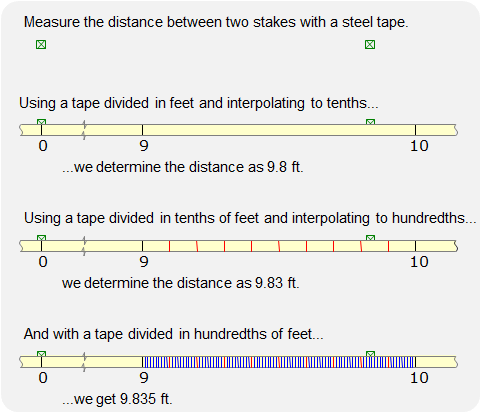A. Introduction
1. Measurement Limitation
A measurement consists of comparing an unknown quantity to a known quantity. Known quantities are the instruments with which we make measurements. Whether instruments are based on physical comparisons, such as a tape, or electronic, such as GPS, there are limits to both their construction and resolution.
Consider the example illustrated in Figure A-1:
 |
|
Figure A-1 |
We could go on. As equipment resolution changes so the does the degree of our measurement certainty. Can we ever determine the “exact” distance between the two stakes? Theoretically we could to a certain resolution, but what if our tape was off due to a temperature change? What if we didn’t align the 0 end correctly? What if the divisions on our tape weren't consistent? What about the physical marks between which we measure?
Everything conspires against us.
We can make the following observations about measurements:
- No measurement is exact.
- Every measurement contains errors.
- The true value of a measurement is never known.
From those three statements we can then deduce that the exact error present in a measurement is unknown.